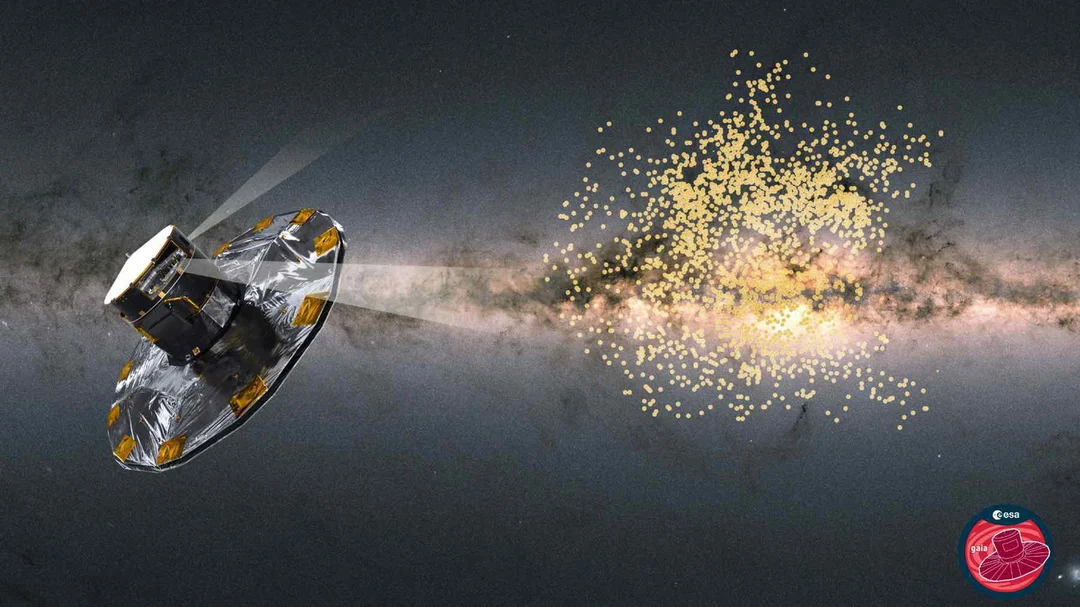
Chaotic Star Cluster Ophion Defies Expectations, Racing Through Space at Breakneck Speeds
In a stunning astronomical discovery, the Gaia mission has revealed a star cluster unlike any other. Named Ophion, this young stellar family is tearing apart at an unprecedented rate, challenging our understanding of star cluster dynamics. Located approximately 650 light-years away, Ophion's chaotic behavior has baffled astronomers and opened new avenues for research into the evolution of the Milky Way.
A recent study published in The Astrophysical Journal, led by Dylan Huson of Western Washington University, sheds light on this unusual phenomenon. Using data from the European Space Agency's (ESA) Gaia mission, Huson's team discovered that Ophion's stars are scattering across the galaxy in a completely disorganized fashion, much faster than expected for a cluster of its age—less than 20 million years old. This rapid dispersion has left scientists searching for answers.
"Ophion is filled with stars that are set to rush out across the galaxy in a totally haphazard, uncoordinated way," explains Huson. "What's more, this will happen in a fraction of the time it'd usually take for such a large family to scatter. It's like no other star family we've seen before."
Typically, star clusters either disperse slowly over millions of years or remain cohesive groups orbiting together. Ophion defies this norm, prompting researchers to consider alternative explanations for its erratic behavior. One leading theory suggests that external forces like supernova explosions from nearby stars could have swept away gas within Ophion, accelerating the stars' movements and causing their chaotic dispersal. The gravitational influence of neighboring star clusters might also play a role.
Marina Kounkel, co-author of the study, admits, "We don't know exactly what happened to this star family to make it behave this way." The lack of a clear cause only amplifies the mystery surrounding Ophion and highlights the need for further investigation.
The Gaia mission, known for its meticulous mapping of the sky, has provided unprecedented tools for studying star clusters with greater accuracy. "It's still pretty new to be able to reliably measure the parameters of lots of young stars at once," notes Johannes Sahlmann, ESA Gaia Project Scientist. Gaia's advanced technology allows for the simultaneous study of numerous stars, enabling the identification of previously unobservable behaviors in young stars like those in Ophion.
The discovery of Ophion's unusual properties was made possible by Gaia's spectroscopic data, which revealed the rapid disintegration of the cluster. Without Gaia's capabilities, uncovering the speed at which the stars were scattering would have been nearly impossible. This breakthrough paves the way for more detailed studies of other young star clusters, potentially revealing similar behaviors and offering further insights into the evolution of star families.
The study of Ophion is pivotal not only for understanding this unique cluster but also for gaining broader knowledge of the Milky Way's evolution. Star clusters like Ophion are vital in forming new stars and contributing to the galaxy's spiral arms. By examining Ophion's disintegration, scientists are gaining insights into star formation processes and how star families impact the galaxy's structure. The data, despite the chaos of Ophion, gives us invaluable information on how young clusters can evolve.
The chaotic nature of Ophion serves as a reminder that much remains to be learned about the forces shaping star clusters in their early stages. Researchers will continue to analyze this cluster, hoping to unravel the roles of intense stellar events like supernovae and cosmic outbursts in shaping star cluster dynamics.
What forces do you think are driving Ophion's chaotic disintegration? Share your thoughts and theories in the comments below!